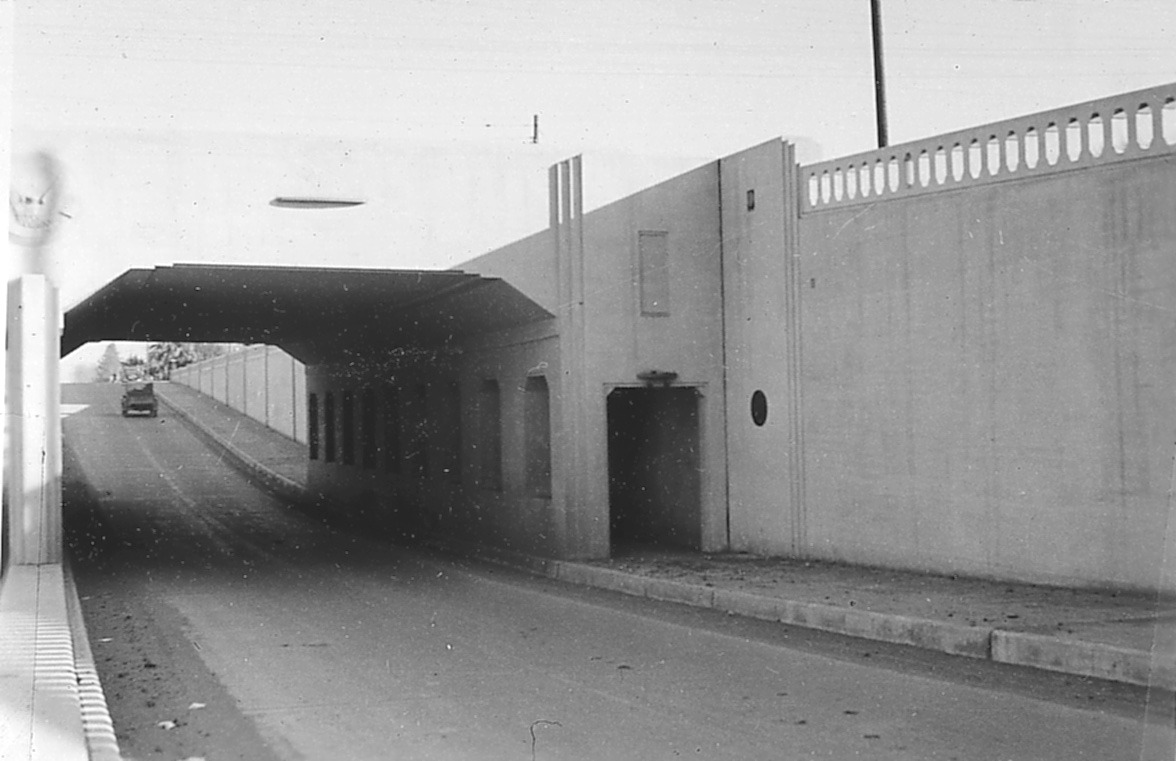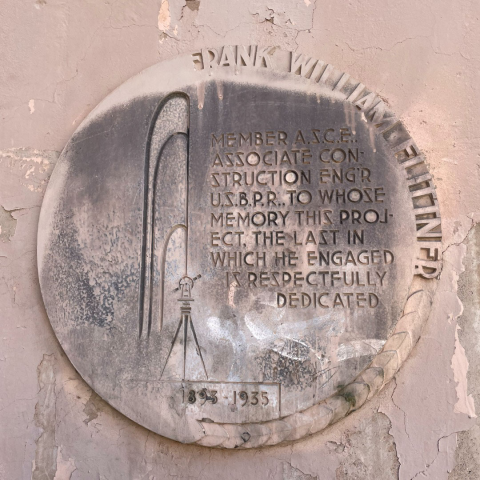Finding the Frank Flittner Underpass right outside my door
Finding the Frank Flittner Underpass right outside my door

Transportation history can be right in front of you and still require a little luck to find it. That happened when I checked what the State Library, Archives and Public Records’ Arizona Memory Project has on a former state highway underpass right outside my office on 17th Avenue, just south of the Arizona State Capitol in Phoenix.
I found this 1936 photo titled Underpass and commemorative plaque on United States Highway 80, the Phoenix-Yuma Highway, in Maricopa County. For the record, 17th Avenue once carried US 80 on its way to and from Yuma and other points west (zoom in on the downtown and Capitol areas in this 1937 map to see its route). The photo shows part of the underpass and a plaque that’s too far away to make out its message. You also can see the plaque in this wider 1936 view of the underpass.
That plaque couldn’t still be there, I thought. I’d driven past that very spot countless times. But when I walked outside, there it was, faded and a bit painted-over, but still readable:
FRANK WILLIAM FLITTNER: Member A.S.C.E., associate construction engineer U.S.B.P.R., to whose memory this project, the last in which he engaged, is respectfully dedicated. 1893-1935
(ASCE stands for American Society of Civil Engineers; U.S.B.P.R. is short for U.S. Bureau of Public Roads.)
I got to work researching Frank William Flittner, and there was plenty to be found. Alas, that didn’t include a photograph of the man.
On Oct. 27, 1935, The Arizona Republic carried an article titled Illness Is Fatal to U.S. Engineer. Frank W. Flittner, who had died at age 42 after a three-day illness, was an associate construction engineer for the U.S. Bureau of Public Roads and well-known throughout central and southern Arizona, the article said. An Associated Press mention of Flittner’s death appeared in the Douglas Daily Dispatch and Arizona Daily Star in Tucson. He was survived by his wife and mother.
Flittner’s previous jobs included private practice as a consulting engineer and specializing in grade separation studies for the California State Highway Department, the article said. New Deal investments funded many grade separations, including the 17th Avenue underpass beneath what then were the Southern Pacific and Atchison, Topeka and Santa Fe railroad tracks, to separate automobile traffic and trains as well as traffic on intersecting highways. According to ADOT’s Historic Bridge Inventory, contractors R.C. Tanner and W.E. Hall submitted the low bid of $89,539.50 and completed the 17th Avenue underpass in late 1935.
In November 1935, Arizona Highways magazine carried a tribute titled We Lose a True Friend. “Frank W. Flittner was ever ready to offer his brilliant talents to help solve the many problems of Arizona highway engineering,” the article said. He had joined the Bureau of Public Roads on Feb. 2, 1931, and served as an associate construction engineer in Phoenix and supervising engineer for southern Arizona and southeastern California.
“In all his work with the Bureau he was careful and thorough. He continually strove for high standards on all work coming within his supervision,” the tribute reads. “Frank Flittner will be long remembered for his engineering ability, sterling character and agreeable personality.”
Though his death was unexpected, the tribute noted that he had bouts of poor health over several years. Yet he carried on his work with diligence, it said. Additional biographical information might offer a clue as to his poor health: He served in the Army during World War I and was wounded at Ypres in August 1918.
So highly regarded was Frank William Flittner that the Arizona Highway Commission, at the suggestion of State Highway Engineer T.S. O’Connell, voted in November 1935 to name the 17th Avenue grade separation Frank Flittner Underpass. Arizona Highways described this as “fitting tribute to the memory of Frank W. Flittner, Associate Construction Engineer, who, connected with the local office of the Bureau of Public Roads up until the time of his death, was very much interested and had exerted every effort to obtain an outstanding piece of work in this structure.”
The commission authorized O’Connell to place a memorial plaque “with a description fitting to Mr. Flittner’s memory.” There actually are two identical plaques; one on the other side of the underpass is painted over but still visible.
The Arizona Memory Project has other mentions of Flittner. The August 1934 edition of Arizona Highways acknowledged his contributions to an article on efforts to prevent termites from damaging wooden sign posts and bridges, and other editions from the early 1930s had his name and title above regular lists of Bureau of Public Roads projects. Among other documents, the 1931-32 and 1933-34 editions of the Arizona Blue Book, a directory of government agencies and officials, listed F.W. Flittner and his role.
Newspaper archives yielded News About Town briefs on Frank W. Flittner, such as a June 16, 1931, Arizona Daily Star notice that he was in Tucson on business and registered at the Roskruge Hotel. He obviously traveled quite a bit to check on projects. Among other notices, the Aug. 22, 1931, Tucson Citizen said that Frank W. Fittner and Associate Bridge Engineer W.P. Wesch would be passing through on their way to inspect US 80 progress in Benson. On Oct. 13, 1932, The Arizona Republic mentioned that Frank W. Flittner was in southeastern Arizona on government business, a month after it noted that he had returned from a trip to Safford.
If you happen to travel 17th Avenue south of the State Capitol (you also can take this virtual trip via Google Street view), I hope you have the chance to see these plaques and appreciate the thought, effort and history behind the Frank Flittner Underpass.
